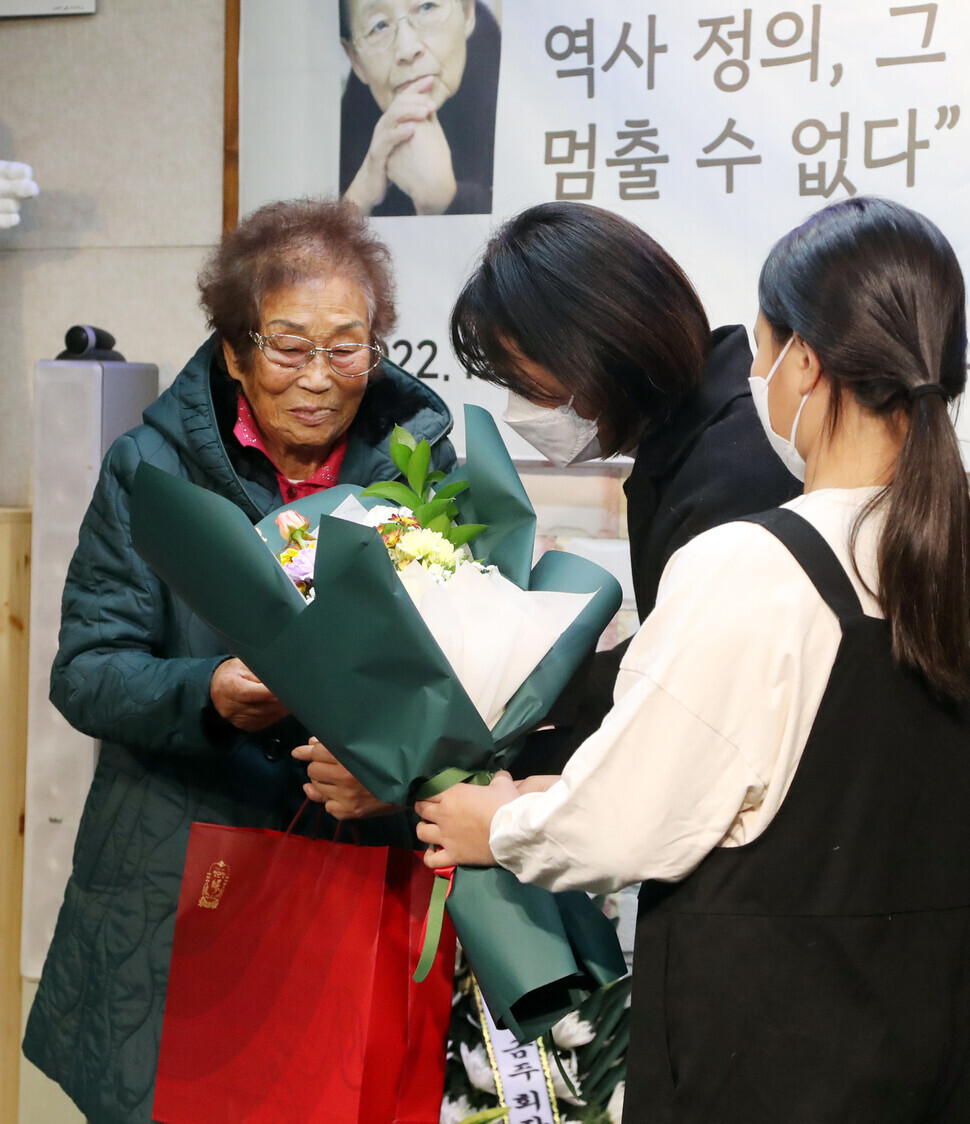hankyoreh
Links to other country sites 다른 나라 사이트 링크
Seoul's roundabout plan to compensate Japan's wartime forced labor victims appears to be in motion

The Hankyoreh confirmed Friday that the Foundation for Victims of Forced Mobilization by Imperial Japan is in the process of adding a clause on compensation to victims to its articles of association.
This is leading some to presume that the government has begun the preliminary preparation process for carrying out its “compensation by subrogation” plan, which for some time now has been strongly considered a likely method of resolving the issue of colonial-era use of forced Korean labor by Japan.
According to the Hankyoreh’s investigation, the foundation held a meeting of its board of directors on Nov. 21 and made the decision to add a phrase about compensation to victims to its articles of association.
The foundation plans to apply for approval of the articles to the Ministry of the Interior and Safety sometime next week. The foundation was first established in 2014 to support Korean victims of forced labor under imperial Japan.
The government’s “compensation by subrogation” plan would entail the Korean government using its budget to pay out compensation to the plaintiffs first in the stead of the companies being accused of using forced labor — namely, Nippon Steel and Mitsubishi Heavy Industries. After this, the South Korean government would claim the right to indemnity from a foundation created by collecting “voluntary” donations from Korean and Japanese companies.
Currently, the foundation’s articles of association contain no wording that points to the possibility for victims to be compensated.
It seems that the foundation’s board of directors has prepared a legal basis for the foundation to enforce a compensation by subrogation plan through a change in their articles of association.
Those in the diplomatic world say that changing the foundation’s articles of association is the first step of the government beginning full-scale preparations to implement the subrogation plan.
The Ministry of Foreign Affairs is also expected to step up its efforts in persuading the victims to accept the plan.
On Nov. 7, Seo Min-jeong, the director of the Asian and Pacific Affairs Bureau at the Ministry of Foreign Affairs, held a meeting with groups supporting the victims of forced labor and explained concepts related to the compensation by subrogation plan.
However, such actions taken by the government are not very aligned with a “victims first” approach and are likely to be a source of difficulties in the future.
So far, the victims have rejected the subrogation plan, instead demanding direct compensation and an apology from the Japanese companies responsible.
“The Yoon Suk-yeol administration is trying to improve South Korea-Japan relations by hastily resolving the issue of forced labor, such as by [pushing for the] compensation by subrogation [plan],” the Campaign for Peace and Historical Justice for South Korea and Japan, which was launched in August by several civic groups to resolve historical issues between Korea and Japan, said on Dec. 8.
By Shin Hyeong-cheol, staff reporter
Please direct questions or comments to [english@hani.co.kr]

Editorial・opinion
![[Guest essay] Preventing Korean Peninsula from becoming front line of new cold war [Guest essay] Preventing Korean Peninsula from becoming front line of new cold war](https://flexible.img.hani.co.kr/flexible/normal/500/300/imgdb/original/2024/0507/7217150679227807.jpg) [Guest essay] Preventing Korean Peninsula from becoming front line of new cold war
[Guest essay] Preventing Korean Peninsula from becoming front line of new cold war![[Column] The state is back — but is it in business? [Column] The state is back — but is it in business?](https://flexible.img.hani.co.kr/flexible/normal/500/300/imgdb/original/2024/0506/8217149564092725.jpg) [Column] The state is back — but is it in business?
[Column] The state is back — but is it in business?- [Column] Life on our Trisolaris
- [Editorial] Penalties for airing allegations against Korea’s first lady endanger free press
- [Editorial] Yoon must halt procurement of SM-3 interceptor missiles
- [Guest essay] Maybe Korea’s rapid population decline is an opportunity, not a crisis
- [Column] Can Yoon steer diplomacy with Russia, China back on track?
- [Column] Season 2 of special prosecutor probe may be coming to Korea soon
- [Column] Park Geun-hye déjà vu in Yoon Suk-yeol
- [Editorial] New weight of N. Korea’s nuclear threats makes dialogue all the more urgent
Most viewed articles
- 1Yoon’s broken-compass diplomacy is steering Korea into serving US, Japanese interests
- 2[Guest essay] Preventing Korean Peninsula from becoming front line of new cold war
- 3[Column] Why Korea’s hard right is fated to lose
- 460% of young Koreans see no need to have kids after marriage
- 5After 2 years in office, Yoon’s promises of fairness, common sense ring hollow
- 6S. Korean first lady likely to face questioning by prosecutors over Dior handbag scandal
- 7[Guest essay] Maybe Korea’s rapid population decline is an opportunity, not a crisis
- 8[Reporter’s notebook] In Min’s world, she’s the artist — and NewJeans is her art
- 9Film on 1948 Jeju Massacre wins prestigious prize at Sundance Film Festival
- 10[News analysis] Jo Song-gil’s defection and its potential impact on inter-Korean relations